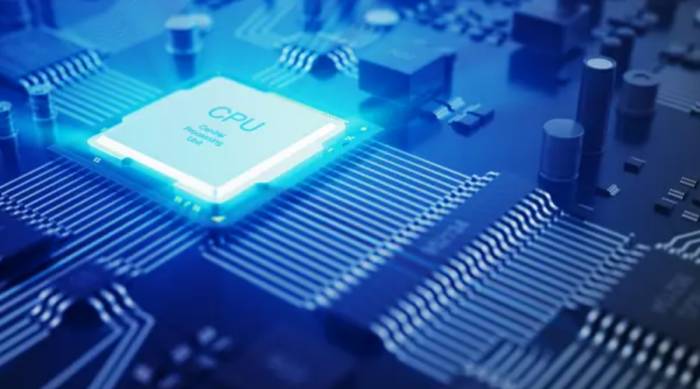Recently, Shiguang has released the high integration large array SPAD-SoC SQ100, truly achieving a flexible partitioned 2D addressable SPAD-SoC. The SQ100 is aimed at applications such as ADAS front-fit mass production, L4/5 autonomous driving, robotics, and industrial automation. A single chip can cover the detection needs for short, medium, and long distances, and is compatible with various scanning methods.
Shiguang's high integration large array SPAD-SoC SQ100
SPAD-SoC is a highly integrated chip design that integrates a single-photon avalanche diode (SPAD) array, signal processing circuits, storage units, and control logic, among other functional modules, onto a single chip.
The SPAD array is the core part of the SPAD-SoC, composed of multiple SPAD pixel units, each capable of independently detecting the presence of a single photon. It is responsible for receiving and detecting photons in the laser echo signal, converting photons into electrical signals. The SPAD array features high sensitivity, high dynamic range, and low noise, enabling high-precision distance measurement and 3D imaging.
The signal processing circuit includes modules such as a preamplifier, analog-to-digital converter (ADC), and digital signal processor (DSP). The preamplifier amplifies the weak electrical signals output by the SPAD array, improving the signal-to-noise ratio. The analog-to-digital converter (ADC) converts the amplified analog signals into digital signals for subsequent digital signal processing. The digital signal processor (DSP) processes the digital signals for synchronization, filtering, peak detection, noise reduction, and compensation, achieving high-precision distance measurement and 3D imaging.
Advertisement
The storage unit is used to store intermediate data and final results during the processing, ensuring data integrity and accessibility. In the SPAD-SoC, the storage unit is usually closely integrated with the DSP to achieve high-speed data exchange and processing.
The control logic is responsible for the control and coordination of the entire SPAD-SoC chip, including timing control, module scheduling, error detection and correction, etc. The design of the control logic needs to consider the overall performance and power consumption balance of the chip, ensuring that the chip can run stably and reliably under various working conditions.
Shiguang's high integration large array SPAD-SoC SQ100 has a SPAD resolution of 768 (H) x 576 (V), with various binning methods such as 3x3, 6x6, 3xn; it can be partitioned into 4/8/16 pixels vertically and 8/16/32/48/64/.../256 pixels horizontally.
SQ100 offers an ultra-flexible partitioned 2D addressable solution, truly solving the long-standing "high reflectivity pollution" problem in the industry, while maintaining high frame rates and long-range detection capabilities, clearing the most significant performance barriers on the VCSEL+SPAD mass production route.
Shiguang's unique SPAD-SoC product series, based on self-developed full-chip technology, integrates key modules such as high-performance BSI SPAD, high-precision clock sampling matrix (TDC), single-photon ranging engine (TCSPC), high-concurrency dToF sensing algorithm accelerator (DSP), LiDAR control center (Lidar Controlling Master), and high-speed data interfaces onto a single chip.Shiguang provides a complete LiDAR system on a chip that can achieve high-speed acquisition and processing of massive data in Shanghai, control of LiDAR systems, and customization and integration of external algorithms.
Features and Applications of SPAD-SoC
SPAD-SoC features high integration, fully digital architecture, high performance and efficiency, flexible partitioning and 2D addressability, low power consumption, and low heat generation. High integration: By integrating multiple functional modules onto a single chip, SPAD-SoC greatly simplifies the system structure, reducing the complexity and cost of LiDAR systems. This highly integrated design also makes the entire LiDAR system more compact, facilitating its use in vehicular, aerial, and other application scenarios.

Fully digital architecture: SPAD-SoC adopts a fully digital architecture, from the photon entering the LiDAR to the conversion into an electrical signal, and then to data processing and point cloud presentation, the entire process is digital. This architecture addresses the loss and distortion issues caused by analog-to-digital and digital-to-analog conversions, improving signal-to-noise ratio and accuracy.
High performance and efficiency: SPAD-SoC integrates a high-performance SPAD array and a high-precision clock sampling matrix, enabling high-speed, high-precision single-photon detection and ranging. At the same time, the integrated digital signal processing unit within the chip can process the collected data in real-time, enhancing the overall efficiency of the system.
Flexible partitioning and 2D addressability: Some advanced SPAD-SoC products, such as Shiguang's SQ100, offer an ultra-flexible partitioning 2D addressable solution, allowing for partitioning and addressing of pixels according to different application scenarios. This solution addresses the "high reflectivity pollution" issue while maintaining high frame rates and long-range detection capabilities.
Low power consumption and low heat generation: Thanks to the use of advanced CMOS processes and highly integrated chip designs, SPAD-SoC performs excellently in terms of power consumption and heat generation. This makes SPAD-SoC more suitable for use in embedded, mobile devices, vehicular, and other low-power application scenarios.
SPAD-SoC chips have been widely applied in fields such as autonomous driving, robotics, and XR. In the field of autonomous driving, it serves as a core component of LiDAR, providing vehicles with powerful environmental perception capabilities; in the robotics field, it helps robots achieve more accurate positioning and navigation; in the XR field, it offers users a more realistic and immersive experience.
In addition to Shiguang, other manufacturers have also laid out in the field of SPAD-SoC, such as Sony. Sony released its first vehicular large-format SPAD chip IMX459 in 2021, which officially entered mass production in 2023. IMX459 has 113,400 SPAD pixels, and by configuring a macropixel through Bining 3x3 SPAD, it achieves a high resolution. IMX459 is mainly mounted on Huawei and Yijin LiDAR, used for vehicular LiDAR systems.
In conclusion,...It can be observed that the structure of SPAD-SoC is a highly integrated chip design, which integrates multiple functional modules such as SPAD arrays, signal processing circuits, storage units, and control logic onto a single chip, achieving the entire process from photon detection to digital signal output. This design not only enhances the performance and stability of the system but also reduces costs and power consumption, providing a more efficient and reliable solution for applications such as lidar.
Comments